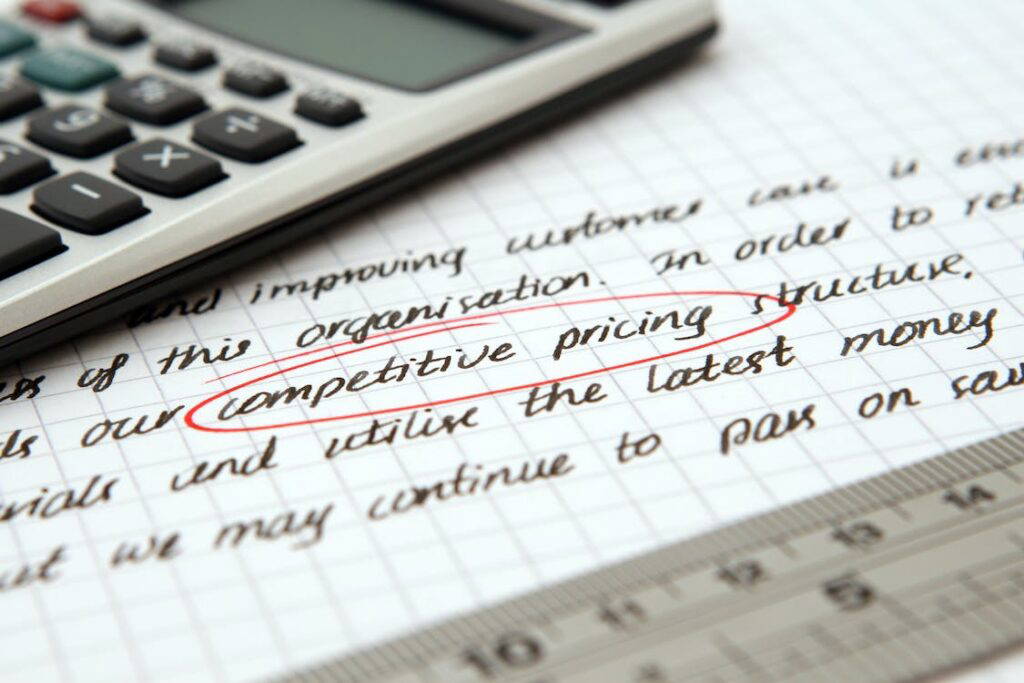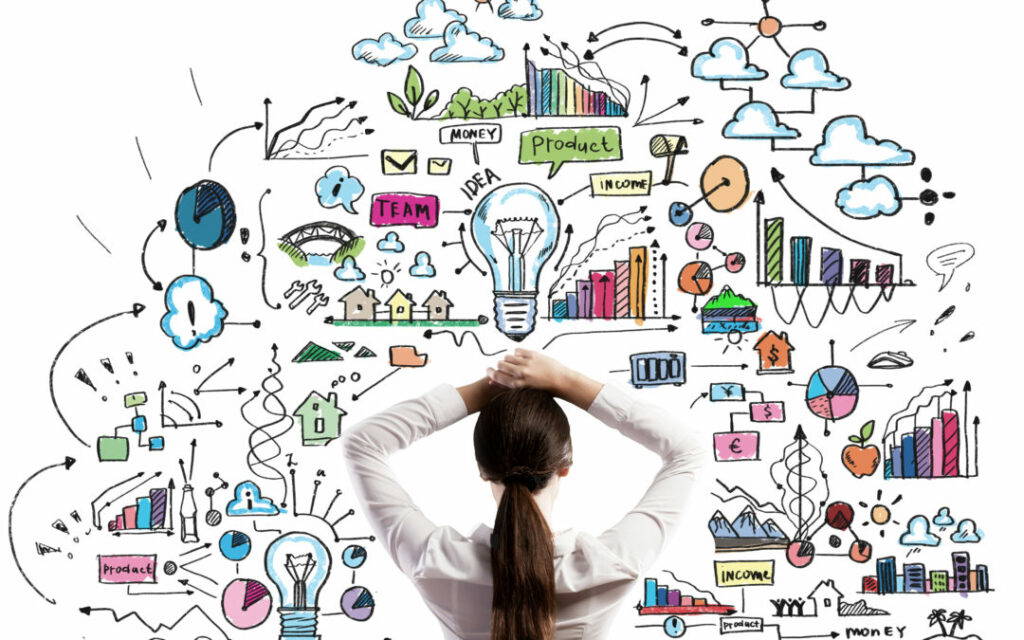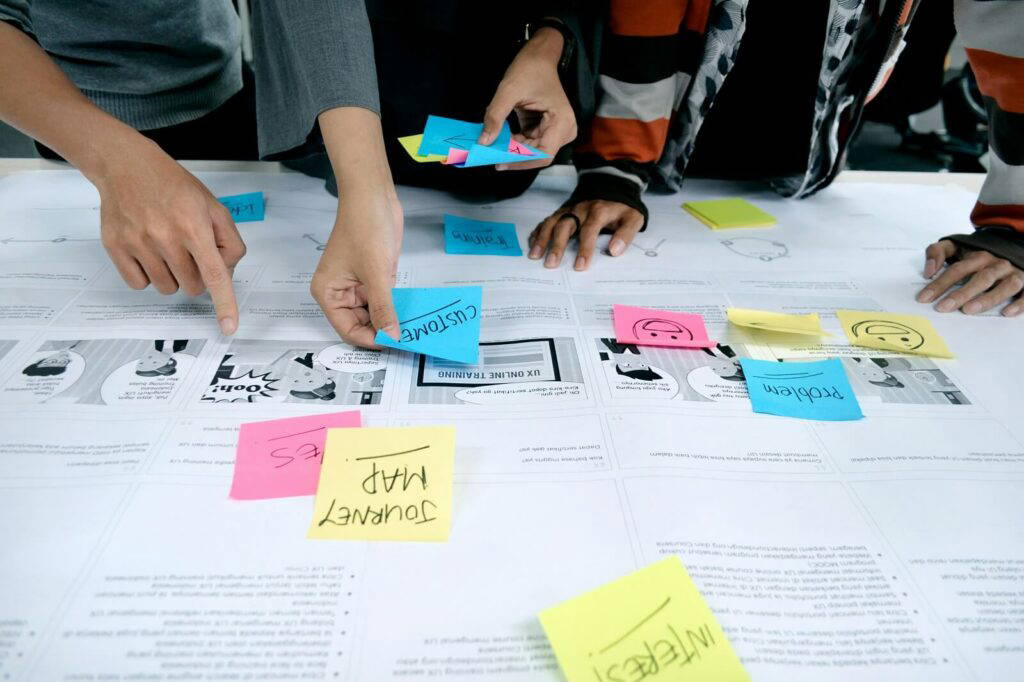
Introduction
The customer journey is a marketing model that represents the process a consumer goes through when purchasing a product or service. If you, as an entrepreneur, have insight into this, you can get in touch with your potential and existing customers at the right moments. In this blog post, we will explain what exactly the customer journey is, discuss the different stages, give an example and show the value of customer journey mapping. Finally, we discuss shortcomings of this model.
What is the customer journey?
The customer journey is a model that shows the journey customers take from the first moment they are aware they want to purchase a product or service to its purchase and aftercare. It is a holistic view for companies that want to understand how the buying process of potential customers takes place. Klantreis is the Dutch term for customer journey. In a customer journey, a customer goes through different stages and possible contact points with potential customers, called touchpoints, become clear. This model offers value for both B2C and B2B companies.
Why map the customer journey?
Mapping the customer journey provides valuable insights that help organizations better understand and serve their customers. It gives you a framework for when and how to communicate with (potential) customers. This offers the following benefits.
- Identify touchpoints through which potential customers interact with your brand, products and/or services. As a company, you can capitalize on this by creating more touchpoints to create more moments of contact with your (potential) customers.
- Building and strengthening your brand.
- Identify growth opportunities for your business.
- Recognize and reduce potential disengagement moments in the customer journey.
- Identify and resolve potential objections.
- Obtain valuable feedback from customers at the right time that will help improve your products and services.
- Increase customer loyalty and sales to existing customers.
All of these benefits can lead to more sales and better conversion.
Customer journey stages
Purchasing a product or services is a process. Before and after a purchase, there are phases that are important to your business. In the customer journey, this process is divided into the following phases: awareness, consideration, purchase, retention and loyalty.

Awareness (consciousness)
The Awareness phase is the starting point of the customer journey. In this phase, potential customers first become aware that they have a need for a product or service. This need can be latent or concrete. With a latent need, a person is not yet aware that they have a need. With a concrete need, on the other hand, a person is aware that he or she has that need. An example of a latent need is someone who finds it annoying to use a hand pump to inflate his bicycle tires, but is not aware of the existence of electric bicycle pumps. A concrete need is, for example, if your television is broken and you need to buy a new television.
Consideration
In the next stage, consumers consider the options available to meet their needs. They actively gather information, such as specifications, prices and reviews. They also compare products or services, and consider pros and cons of each option.
Purchase
The purchase phase is when the customer makes the decision to proceed to purchase.
Retention
The retention phase is all about the buyer's post-purchase experience. Think customer service, inquiring about feedback, asking for reviews, and offers for follow-up purchases.
Loyalty
This stage describes the degree of customer loyalty to a brand. Customers who have had a positive experience with a brand in the previous phases are more likely to purchase products or services from that brand again. They can also provide valuable feedback and provide word-of-mouth marketing.
Customer journey example
To clarify the customer journey, let's take a concrete example. Suppose Chris joined the gym.
- Awareness: Chris hears from a friend that he is a member at the local gym. Chris hasn't exercised in a while and thinks it's time to start exercising again.
- Consideration. He asks his friend if he likes the gym. He also visits the gym for a tour and looks at online reviews. In addition, he searches online for other gyms in the area.
- Purchase. Chris decides to take a trial membership at the gym where his friend is also a member. He liked the tour and the online reviews were also mostly positive. In addition, he can exercise there together with a friend.
- Rentention. The gym offers guidance and a personal training plan. He also receives an e-mail to give his opinion on the gym and facilities.
- Loyalty. After the trial subscription, Chris decides to renew his subscription. He really enjoys the gym. He also tries to convince other friends to also get a subscription so they can exercise together.
Customer journey see-think-do-care
The see-think-do-care model is also a customer journey model. In this model, the customer journey looks as follows.
- See. The awareness stage, where the potential customer is first introduced to a brand or product.
- Think. The consideration phase, where the customer actively seeks information and considers whether a product or service meets their needs.
- Do. The purchase phase, where the decision is made to proceed with the purchase.
- Care. The loyalty phase, where customers receive maintenance and support after the purchase. This can lead to repeat purchases and recommendations to others.
As you can see, there are great similarities between the stages of the 2 customer journeys and both can be used in practice.
Customer journey mapping
As a company, it is valuable to map out the customer journey of (potential) customers. If the customer journey is clear, you can make the right decisions to show the right message to your target group at the right time. The following questions will help you map out the customer journey of your customers.
- Who are your potential customers? Who is your target audience? Creating a buyer persona can also help you understand your customer journey. A buyer persona is a detailed description of a target audience based on research of customer data. It provides insight into characteristics such as demographics, needs, goals, wants and behaviors of your target audience.
- What questions and needs do your potential customers have?
- Through which offline and online channels do potential customers search for information. These are possible touch points.
- What expectations are there about your product or service? What are possible objections to not purchasing your product or service?
- What are times when potential customers may drop out?
- Are customers satisfied after they make a purchase from you?
- Do your customers stay loyal to you and make follow-up purchases? Why do they or don't they?
Customer journey map
We have now explained the customer journey model. You're probably wondering how you can use this model to improve your marketing and sell more products or services. For this you can use the customer journey map.
A customer journey map, also called a customer journey canvas, is a visual representation of every possible step a customer goes through in interacting with your business. It illustrates the different stages, touchpoints, and experiences of your (potential) customers. Creating a customer journey map helps you turn the customer journey into actions that move your business forward.
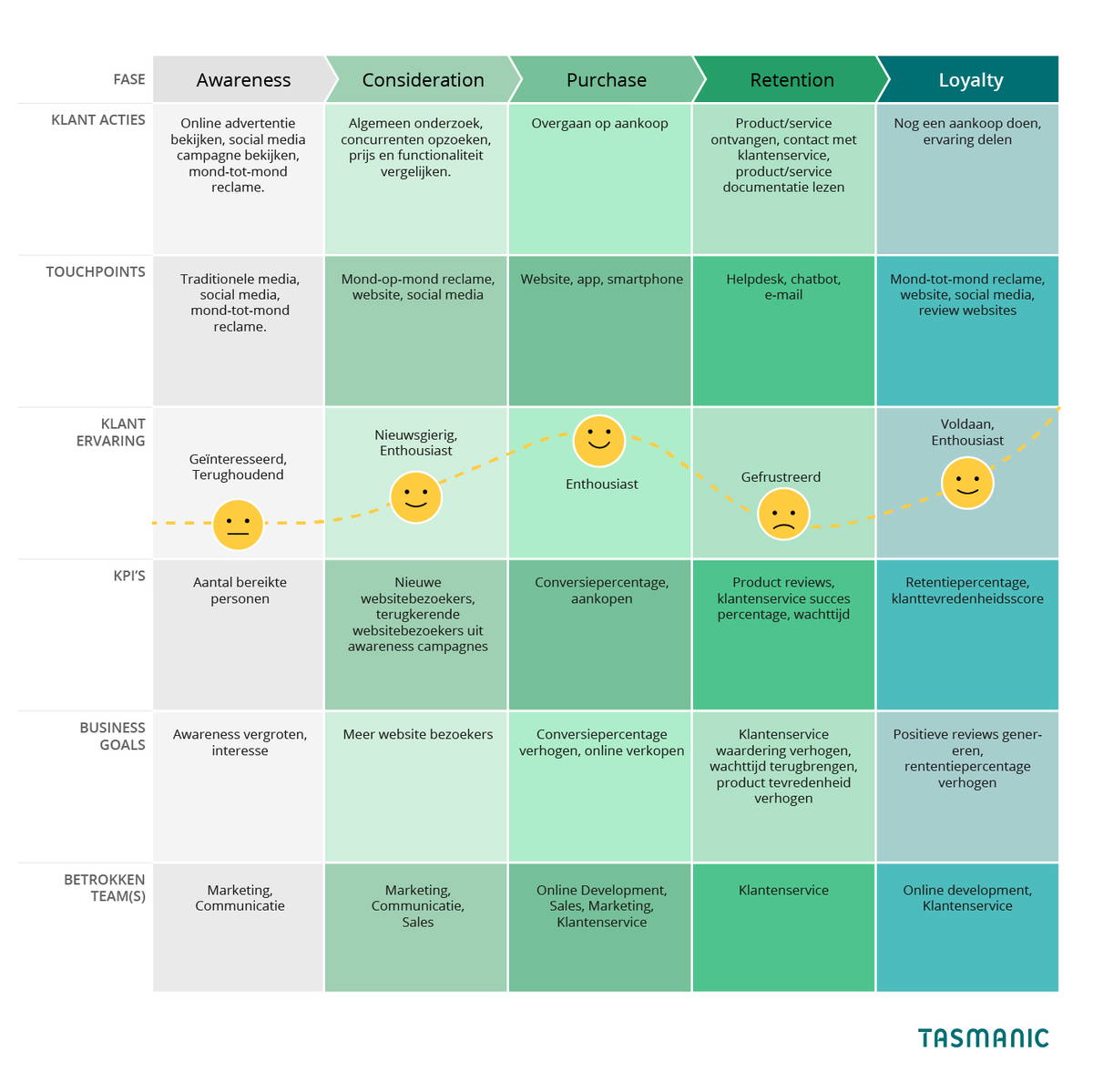
Mapping your potential customers' customer journey and creating a customer journey map can help increase sales and build a strong brand. Let's make this concrete with an example of a gym looking to expand its customer base.
The gym researched its existing customer base and created the following buyer persona: male or female around 30, lives no more than 15 kilometers from the gym, is concerned with his own weight, and is interested in healthy eating.
Awareness: the gym is launching a social media campaign for people who live up to 15 kilometers from the gym, are between 25 and 35 years old and are interested in sports and healthy eating. The goal is to reach as many people as possible and attract them to the gym's website. The gym is also starting a campaign in which existing members may bring a friend for a free trial class. Those taking a trial class will leave their details such as name and email address.
Consideration: the gym creates a retargeting campaign in Google and Instagram for people who have visited the website. This means that people who have visited the website will be targeted for ads in Google and Instagram. Also, the gym is going to solicit reviews from satisfied members so that interested parties can read more positive online reviews. People who took a trial class will receive an email with the gym offer and an attractive offer to take out a 3-month subscription.
Purchase: the gym's website is being improved by adding more social proof. An A/B test is also being launched for the registration form with the goal of improving conversion.
Retention: a personalized plan is created for all new members so that each member can work toward his or her goals. Also, after 1 month, each new member receives an email to give their opinion on the gym's facilities and service. The spot school uses this to improve its facilities and service.
Loyalty: Members who cancel their subscriptions are asked to complete an online survey. With this information, the gym aims to reduce pain points from existing members. After 3 months, members who have cancelled their subscriptions will receive an offer for an annual subscription at a reduced rate. Former members who have given their consent will receive emails about new classes and facilities. With this, the gym hopes to stay top of mind and generate interest.
To communicate the right message at each stage of customer journey, you can apply the AIDA model.
Leveraging CRM for your customer journey
When applying the customer journey, data and touchpoints can be scattered across different channels and software. This can become complex and cost a lot of work. Employing custom relationship management (crm) software can help with this. The advantages of a crm include being able to collect different data in 1 place and applying marketing automation. One disadvantage is that crm packages do tend to be pricey and have a learning curve.
Customer journey critique
Hopefully, we have informed and inspired you well with this blog post and you will want to get started immediately on creating a customer journey for your business. However, the model also has shortcomings. For example, the model will not apply to every purchase. If you walk past an ice cream parlor in town on a hot summer day and impulsively buy an ice cream, there is hardly a customer journey. Also, a customer journey often involves a buyer persona, but in practice customers turn out to be very different. As a result, customer journeys can also be very diverse and different for your customers, so establishing one customer journey can lead to tunnel vision.
Still, this model can certainly provide value by considering how to reach, persuade and retain potential customers. We also recommend getting started with this and especially testing it.
Did you find this an interesting article? Then you will also find the following blog posts interesting.
Are the results from your online marketing disappointing?
Request our no-obligation performance scan and we'll tell you where you're going wrong.















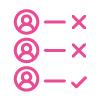
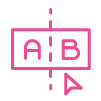
 Team
Team FAQ
FAQ Vacancies
Vacancies Contac
Contac AWR
AWR Ahrefs
Ahrefs Channable
Channable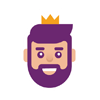 ContentKing
ContentKing Leadinfo
Leadinfo Optmyzr
Optmyzr Qooqie
Qooqie Hubspo
Hubspo Semrush
Semrush



